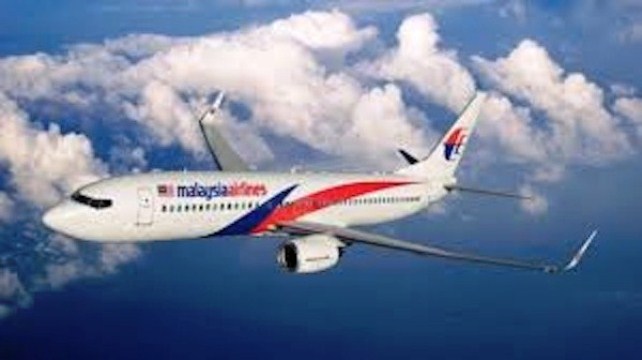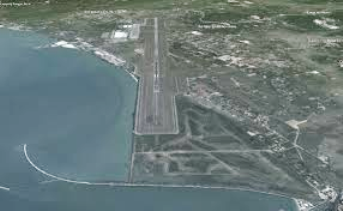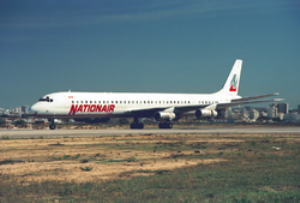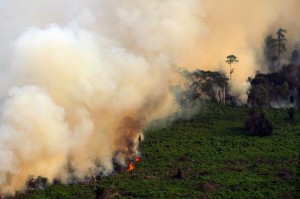 Deborah Dupre Human Rights Examiner
Deborah Dupre Human Rights Examiner
March 18, 2014
Ten days of the missing Malaysia Airlines Flight 370 have spawned speculations and investigations related to its passengers, pilots, ground crew, geopolitics and hijacking scenarios. Today, ten days later, using known data, a seasoned pilot provides on Google+, picked up by Wired Magazine, the most logical, albeit devastating, theory regarding where the plane is.
13,000-foot Runway at Pulau Langkawi
We know the basic MH370 story: A loaded Boeing 777 departed March 8 on a hot midnight from Kuala Lumpur, headed to Beijing. Approximately one hour out, across the gulf toward Vietnam, the plane’s transponder and secondary radar tracking shut down.
Anyone following the story knows the Malaysian military radar tracked the plane on a southwesterly course back across Malay Peninsula into the Strait of Malacca. Malaysians headed back.
Transponders/Communications Loss ‘Perfect Sense’
The left turn is the key to Chris Goodfellow, with 20 years experience as a Canadian Class-1 instrumented-rated pilot for multi-engine planes.
Capt. Zaharie Ahmad Shah, a well-loved and respected human rights defender, was a very experienced senior captain with 18,000 hours of flight time.
“We old pilots were drilled to know what is the closest airport of safe harbor while in cruise,” says Chris Goodfellow. ”Airports behind us, airports abeam us, and airports ahead of us. They’re always in our head. Always.
“If something happens, you don’t want to be thinking about what are you going to do–you already know what you are going to do. When I saw that left turn with a direct heading, I instinctively knew he was heading for an airport.”
Captain Zaharie Ahmad Shah was flying a direct route to Palau Langkawi, a 13,000-foot airstrip with an approach over water and no obstacles, Goodfellow says.
He did not turn back to Kuala Lumpur because he knew that terrain was hostile: 8,000-foot ridges to cross. He knew he was closer to Langkawi. [See this airport on Google Earth.]
Goodfellow says that Captain Shah did all the right things when confronted by a major event onboard.
“For me, the loss of transponders and communications makes perfect sense in a fire,” Goodfellow says. “And there most likely was an electrical fire. In the case of a fire, the first response is to pull the main busses and restore circuits one by one until you have isolated the bad one.
“If they pulled the busses, the plane would go silent. It probably was a serious event and the flight crew was occupied with controlling the plane and trying to fight the fire. Aviate, navigate, and lastly, communicate is the mantra in such situations.”
Two Types of Fires, One Incapacitating Type of Smoke
One type of fire is electrical – not as fast and furious, with or without incapacitating smoke. Goodfellow shows how a fire explains every aspect known about MH370 and its capable pilot.
One possibility he says is an overheat on one of the front landing gear tires, it blew on takeoff and started slowly burning.
“Yes, this happens with underinflated tires,” Goodfellow says. “Remember: Heavy plane, hot night, sea level, long-run takeoff. There was a well known accident in Nigeria of a DC8 that had a landing gear fire on takeoff. Once going, a tire fire would produce horrific, incapacitating smoke.
“Yes, pilots have access to oxygen masks, but this is a no-no with fire. Most have access to a smoke hood with a filter, but this will last only a few minutes depending on the smoke level. (I used to carry one in my flight bag, and I still carry one in my briefcase when I fly.)
“What I think happened is the flight crew was overcome by smoke and the plane continued on the heading, probably on George (autopilot), until it ran out of fuel or the fire destroyed the control surfaces and it crashed.
One might also remember that massive infernos have blazed across the region. Fire and smoke in the entire region has been so severe, major airports have since been closed.
Tragically, Goodfellow says MH370 would be found along that route and “looking elsewhere is pointless.”
He says the last words from MH370, “good night,” strongly indicates all was OK on the flight deck as far as the crew knew at that time.
“Remember, there are many ways a pilot can communicate distress. A hijack code or even transponder code off by one digit would alert ATC that something was wrong. Every good pilot knows keying an SOS over the mike always is an option. Even three short clicks would raise an alert.
He says, unknown to the pilots at that point, things were probably in the process of going wrong.
Evidently the ACARS went inoperative some time before. Disabling the ACARS is difficult and leads Goodfellow to believe more in an electrical problem or an electrical fire than a manual shutdown.
“I suggest the pilots probably were not aware ACARS was not transmitting,” he says.
As for the reports of altitude fluctuations, given this was “not transponder-generated data but primary radar at maybe 200 miles, the azimuth readings can be affected by a lot of atmospherics and I would not have high confidence in this being totally reliable.”
Goodfellow says that if the pilot ascended to 45,000 feet in a last-ditch effort to quell a fire by seeking the lowest level of oxygen, that would be an acceptable scenario.
“At 45,000 feet, it would be tough to keep this aircraft stable, as the flight envelope is very narrow and loss of control in a stall is entirely possible. The aircraft is at the top of its operational ceiling.
The reported rapid rates of descent could have been generated by a stall, followed by a recovery at 25,000 feet. The pilot may even have been diving to extinguish flames.
He says going to 45,000 feet in a hijack scenario doesn’t make any good sense to him.
Additional Flying Time
When departing Kuala Lumpur, MH370 had fuel to get to Beijing, an alternate destination, probably Shanghai, plus 45 minutes: approximately 8 hours.
He burned about one quarter of it the first hour with takeoff and climbing to cruise.
When turning toward Langkawi airport, Capt. Shah would have approximately 6 hours worth of fuel left, directly correlating with Inmarsat data pings received until fuel exhaustion.
Aircraft Fire Demands One Thing: Get Machine On Ground ASAP
The remaining fuel flight time confirms the crew was tragically incapacitated and the flight continued deep into the south Indian Ocean.
“Capt. Zaharie Ahmad Shah was a hero struggling with an impossible situation trying to get that plane to Langkawi,” Goodfellow said.
“There is no doubt in my mind. That’s the reason for the turn and direct route.”
Sources: Google+, Wired Magazine
Photo Credits: Google, ABC News
Suggested by the author
Malaysia jet hidden by Electronic Weaponry? 20 EW defense-linked passengers
Missing Malaysia plane mystery mounts: 4 passport issues, 20 high-techs on board
Missing Malaysia Plane Terror In Sky
http://www.airlinereporter.com/2014/03/breaking-malaysia-airlines-flight-mh370-missing/










